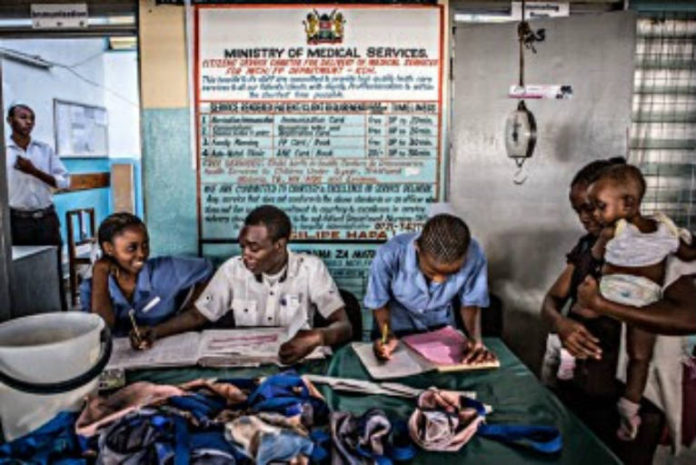
Over the past 15 years, there have been positive developments around immunisation. Around 80% of children in low-income countries are now receiving basic vaccinations against serious diseases, estimates say.
But how do healthcare providers know who has been immunised, and where they are? Which children are least likely to get these vaccinations? And if and when disease strikes communities, surely ministries of health need to know about it as quickly as possible so they can respond swiftly.
According to Gavi, the Vaccine Alliance, 580 million children in the developing world have been given basic vaccines with the organisation’s support since 2000. But that still leaves 19 million children not fully immunised with basic vaccines, and these children can be the hardest to reach.
Jan-Willem Scheijgrond, head of international partnerships at Philips says that accurate data is essential to improve patient outcomes, access to care and reduce costs. “We aren’t a big player in immunisation but we are a big player in data.” Gavi, on the other hand, has extensive experience in scaling up immunisation programmes and has a huge need for accurate and timely data. Both believe that good data is key to strengthening health systems.
That’s why Philips and Gavi are signing a letter of intent at the United Nations General Assembly this week. They will be jointly developing scalable digital transformation plans aimed at improving the quality of immunisation data and its collection in primary and community healthcare. Initially, their focus will be on Uganda which will serve as a test region.
Gavi is a public-private partnership, established in 2000, that increases equitable use of vaccines in lower income countries. The organisation covers 73 countries, and aims to vaccinate every child in those countries. While the current estimate is that 81% of those children are vaccinated, even that figure is not based on robust data. Scheijgrond says that “If we want to move towards reaching every child, we need to have a positive ID as to where they are and what vaccines they’ve already received and not just guess.”
Marie-Ange Saraka-Yao is the managing director, resource mobilisation and private sector partnerships at Gavi. “Our first efforts were to get vaccines available to children in developing countries. But the next step is to find children in more rural places, and that’s harder. This will help us get to children we aren’t able to reach and to track their health and the spread of disease,” she says. As a result, Gavi launched a data strategy in 2015 to improve data coverage and accuracy across a range of issues. However, their expertise is not in data transformation.
That is where Philips comes in. Philips is a health technology company enabling better health outcomes in more developed countries. Gavi wanted to bring that type of technology to primary healthcare in Africa. Both Philips and Gavi are convinced of the need for robust health systems and the role of IT within that, wanting to improve primary healthcare at scale and were seeking a partner whose interests and expertise were complementary.
Philips is already committed to sustainability, with a goal to link 95% of their revenue to the SDGs by 2025, specifically those related to health and consumption patterns.
Scheijgrond points out, “Data is essential to produce outcomes, access to care and reduced cost. We are a big player in health data, and that includes immunisation.” Digital integration is also key. In the developing world there are “zillions of e-health projects addressing a small part of the health continuum and none of them are integrated. That is where our expertise comes in. If you want to transform healthcare, it can’t be one digital solution for [this] and one digital solution for [that],” he continues. “For example, an IT solution for HIV/Aids needs to be interoperable with IT solutions, ante-natal care, and immunisation in the primary care setting.”
As a result, at the end of September representatives from Philips and Gavi will meet in Uganda, alongside colleagues from the ministry of health, and other health stakeholders, including university researchers. This co-creation meeting will prioritise data challenges and processes for the country, and draw up a transformation plan.
After this plan has been developed, around the end of the year, the Ugandan government will assess how to implement it. Philips and Gavi will then consider how to roll out the process in other countries, based on what they have learnt from this experience.
Gavi’s strategy during 2016-2020 is to build on and improve the gains already made in the equitable use of vaccines. Saraka-Yao says, “It is possible that with technology and partnerships, we can accelerate and go further and faster. That is the goal. To reach the children that are unreached, make sure they are protected from outbreaks.”
Scheijgrond says that he hopes Philips and Gavi will be able to help countries figure out local solutions for specific problems. “But at the same time we want to find the 80% common denominator across regions. That will reduce costs and do what was not possible before, reduce the cost of healthcare.”
This article was initially published in Guardian Sustainable Business.
